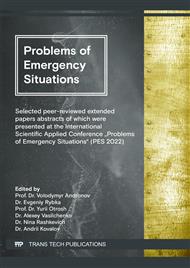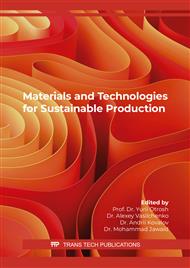p.135
p.143
p.151
p.159
p.169
p.179
p.187
p.197
p.211
Drilling Waste Disposal Technology Using Soil Cement Screens
Abstract:
Known technological solutions for well drilling waste utilization are analyzed. The technological decision of the device of storage of drilling waste from soil-cement elements with the device of a covering from soil-cement is offered. It is proposed to fill the repository with waste in layers of drilling mud, site soil, using a layer of composition for neutralization with the use of ash burning wood residues. The composition is proposed to be prepared near storage facilities. It is proposed to make the neutralizing composition periodically in the sludge storage as they are filled. In the case of a high level of sludge contamination with petroleum products, sorbents are added in addition to filling the storage. The thickness of the layers is chosen based on optimal humidity. It is offered to add ash from the Mykolayiv thermal power plant in the amount of 5 wt.% By weight of cement when installing the walls and covering the sludge storage from soil cement. It was found that with increasing the shelf life of samples in water to 270 days increases the average compressive strength of soil cement samples without additives and with the addition of the appropriate percentage of fly ash by more than 7%.
Info:
Periodical:
Pages:
211-220
Citation:
Online since:
July 2022
Authors:
Keywords:
Price:
Сopyright:
© 2022 Trans Tech Publications Ltd. All Rights Reserved
Share:
Citation:



